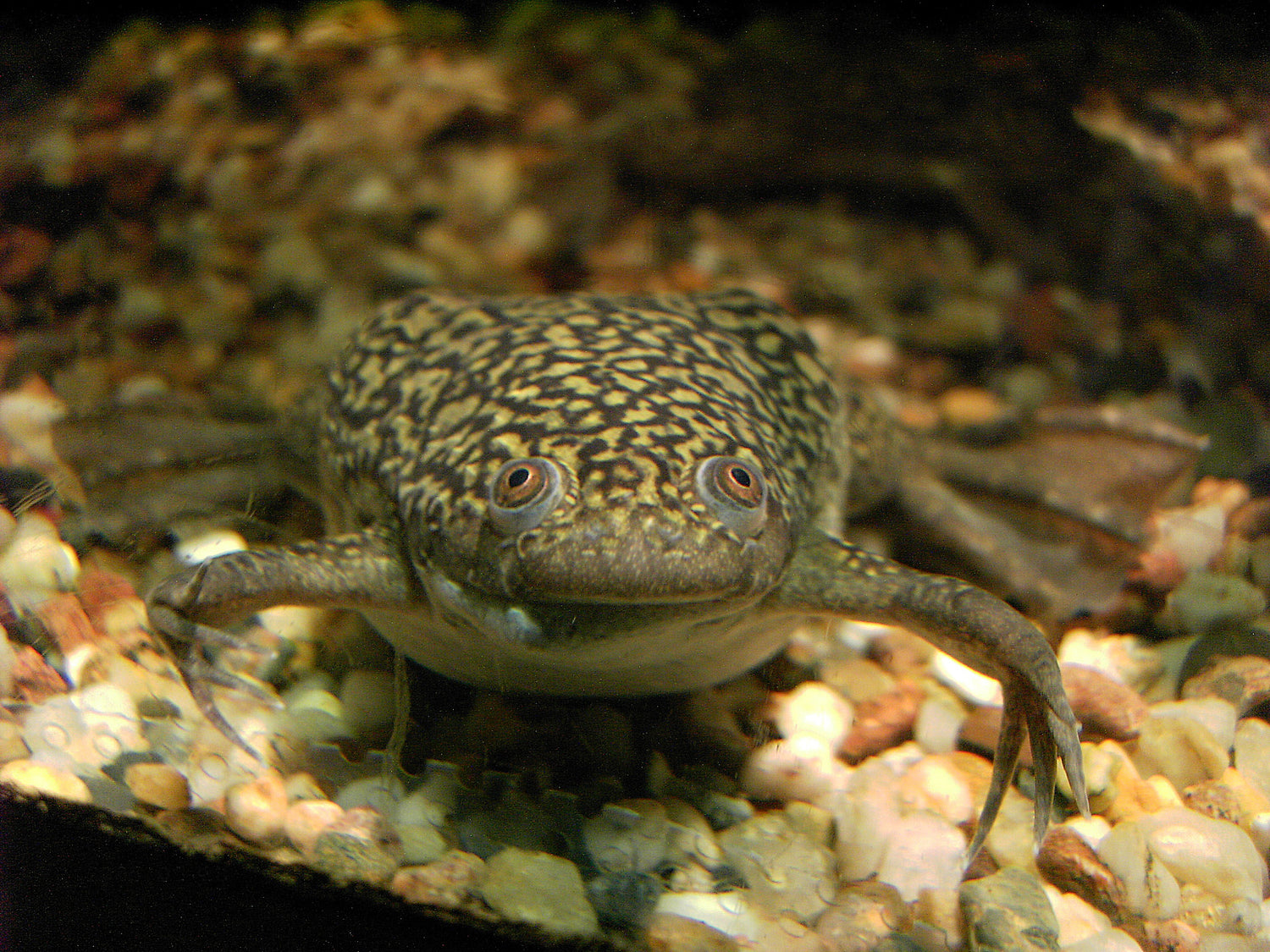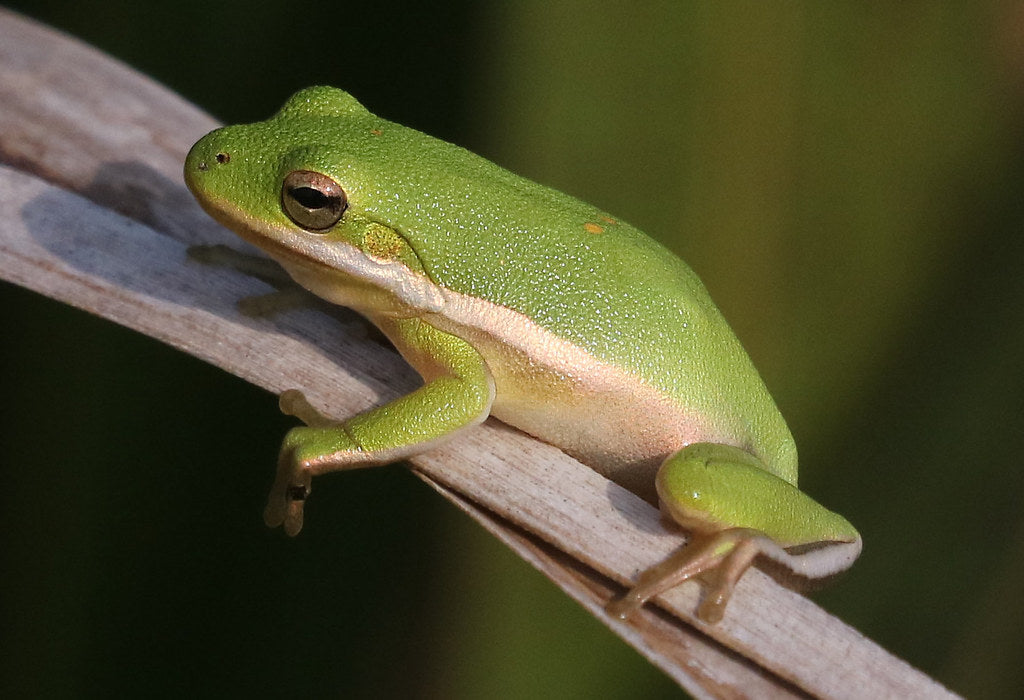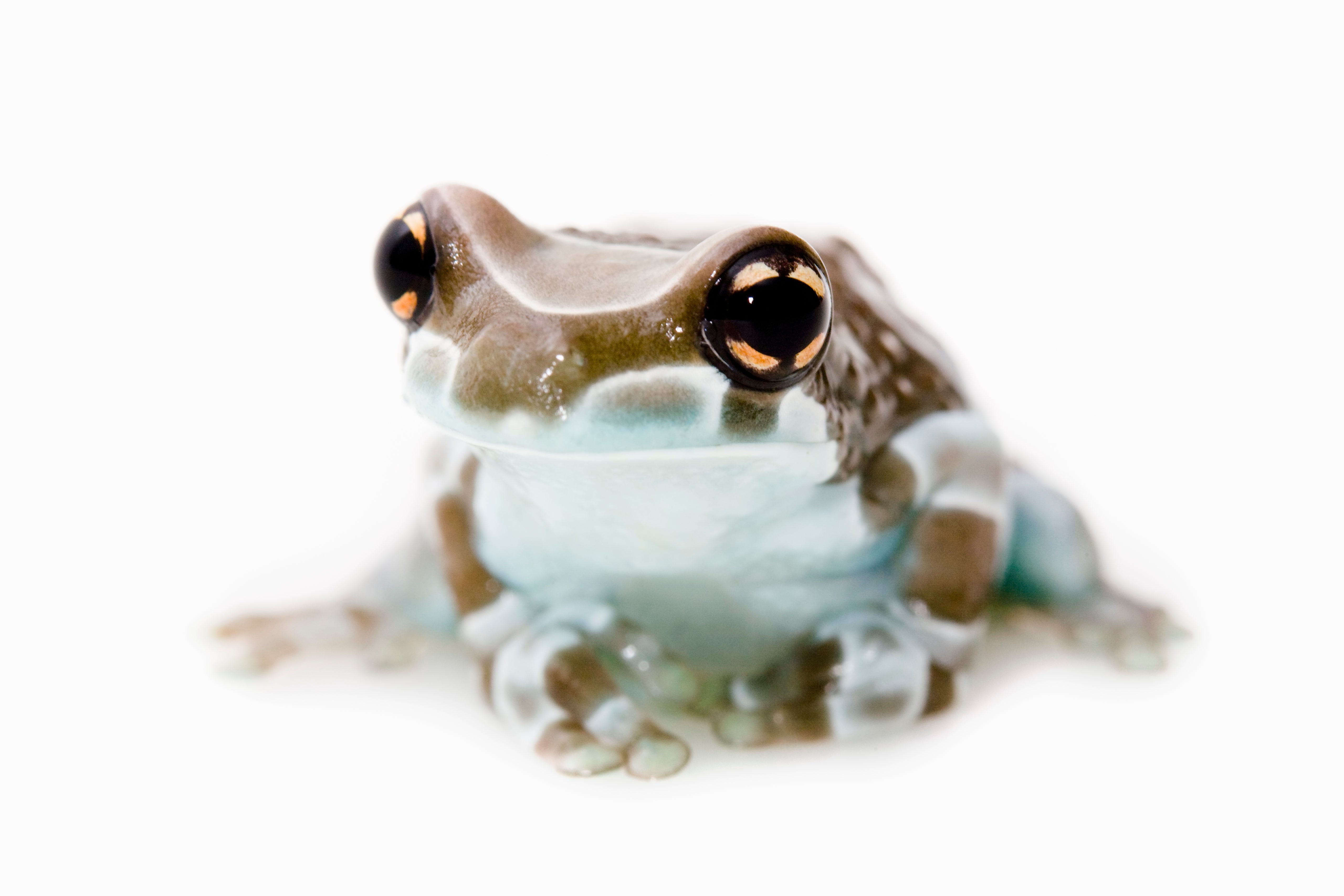The African clawed frog (Xenopus laevis) is a medium-sized, aquatic, diurnal species of amphibian. They are native to southern Africa, but have invasive populations in the US, Chile, Great Britain, and other parts of the world. They are quite adaptable, and while they can survive in just about any body of water, they seem to prefer warm, stagnant water.
African clawed frogs are typically 4-5” long, with smooth skin, a flattened body, lidless eyes, no tongue or visible ear, and the hind feet are webbed, with claws. Coloring is generally blotched olive, gray, and/or brown, with a pale belly.
African clawed frogs are known for being quite hardy, which makes them beginner-level amphibians. However, their needs still shouldn’t be underestimated. With good care, they can live up to 20 years.
How much space do African clawed frogs need?
African clawed frogs are fully aquatic, so they need an enclosure that can hold plenty of water without leaking, while also being shallow enough to make it easy for the frog to breathe easily.. The minimum size for one African clawed frog is 20”L x 10”W x 10”H, but larger is preferred. The water should not be much deeper than 12”, and there should be a tightly-fitting lid to prevent potential escape.
Cohabitation (keeping multiple African clawed frogs in one enclosure) is generally not recommended, as this species is known for cannibalism.
Do African clawed frogs need UVB?
They seem to be able to survive without it, but it’s still best practice to provide UVB lighting for optimal health and wellbeing. This may seem unnecessary, since African clawed frogs are aquatic, but UVB wavelengths actually travel quite well through clear water, unlike with glass and plastic. Furthermore, since African clawed frogs are active during the day and night, it’s very likely they’re naturally exposed to sunlight on a regular basis in the wild.
Providing UVB lighting to your frog gives them all of the vitamin D that their body needs, stimulates better appetite and activity, and generally allows them to be healthier than they would be without. The best UVB bulbs for African clawed frogs are:
- Zoo Med Reptisun T5 HO 5.0
- Arcadia Forest 6%
The UVB bulb should be half the length of the enclosure, housed in the Zoo Med T5 HO Terrarium Hood fixture, and placed 6-8” above the water’s surface on top of a mesh screen lid. UVB bulbs decay over time, so don’t forget to replace your bulb every 12 months to maintain good performance.
Lights should be on for 12 hours/day.
What temperatures do African clawed frogs need?
African clawed frogs are ectotherms, which means that they rely on the temperature of their environment to help regulate their metabolism and stay healthy. Like fish, the water temperature should be maintained within a certain range. Optimal water temperature for African clawed frogs is between 68-77°F.
Usually this is room temperature, but if you need help keeping the water sufficiently warm, use an aquarium heater like the Zoo Med TurtleTherm. Keep track of water temperatures with an aquarium thermometer.
How do you maintain an African clawed frog aquarium?
It’s important to keep the water in your African clawed frog’s aquarium clean in order to keep your pet healthy. Use a low flow aquarium filter designed for fish that prefer stagnant water — strong water flow will stress your frog out!
Perform partial water changes every two weeks. Any water added to the aquarium should be treated with dechlorinator like Zoo Med Reptisafe to prevent harmful chemicals from being introduced to your frog’s habitat.
Algae buildup should be manually scrubbed off with a brush or magnetic glass scrubber.
What substrate is good for African clawed frogs?
African clawed frogs don’t require substrate, but it’s a good idea to add some to the aquarium to improve the enclosure’s appearance and, more importantly, give your frog a medium to dig around in as a form of environmental enrichment.
The best substrate for African clawed frogs is fine sand such as Exo Terra Riverbed Sand. This substrate must be routinely cleaned with a siphon to maintain good hygiene.
What décor can you use in an African clawed frog aquarium?
It’s terribly boring for a frog to be stuck in an enclosure with nothing in it except land and water. It doesn’t matter how big the enclosure is if you don’t put things in it for your pet to use and interact with.
Décor options for African clawed frogs include:
- mopani wood
- live or artificial plants
- pre-made hides/caves
- artificial ornaments
Whatever you choose to use, make sure that the frog has cover to hide in so it can feel secure in its environment.
Never use anything made of metal within the aquarium, as metal ions are harmful to African clawed frogs!
What do African clawed frogs eat?
African clawed frogs are primarily carnivores, which means that they need to eat whole animal prey in order to get the nutrition that they need. Feed juveniles daily, and adults 3-4x/week. Offer as much food as they will eat within ~10 minutes.
Food options for African clawed frogs:
- Black soldier fly larvae
- Bloodworms
- Earthworms
- Fish
- Hornworms
- Tubifex worms
- Shrimp
Certain commercial diets such as Tetra Reptomin are a good idea to include in your frog’s diet because they will help ensure that your frog has enough vitamins and minerals.
Do African clawed frogs like to be handled?
Very few amphibians actually “like” to be held, and given that African clawed frogs are aquatic, it’s best to keep your hands off this pet. If you want to bond with your pet, try feeding them from soft-tipped feeding tongs!
*This care sheet contains only very basic information. Although it’s a good introduction, please do further research with high-quality sources to obtain additional information on caring for this species.
"File:Gemeiner Krallenfrosch - Xenopus laevis - aus Afrika ArM.jpg" by Ben Rschr is licensed under CC BY 2.5




Leave a comment
This site is protected by hCaptcha and the hCaptcha Privacy Policy and Terms of Service apply.